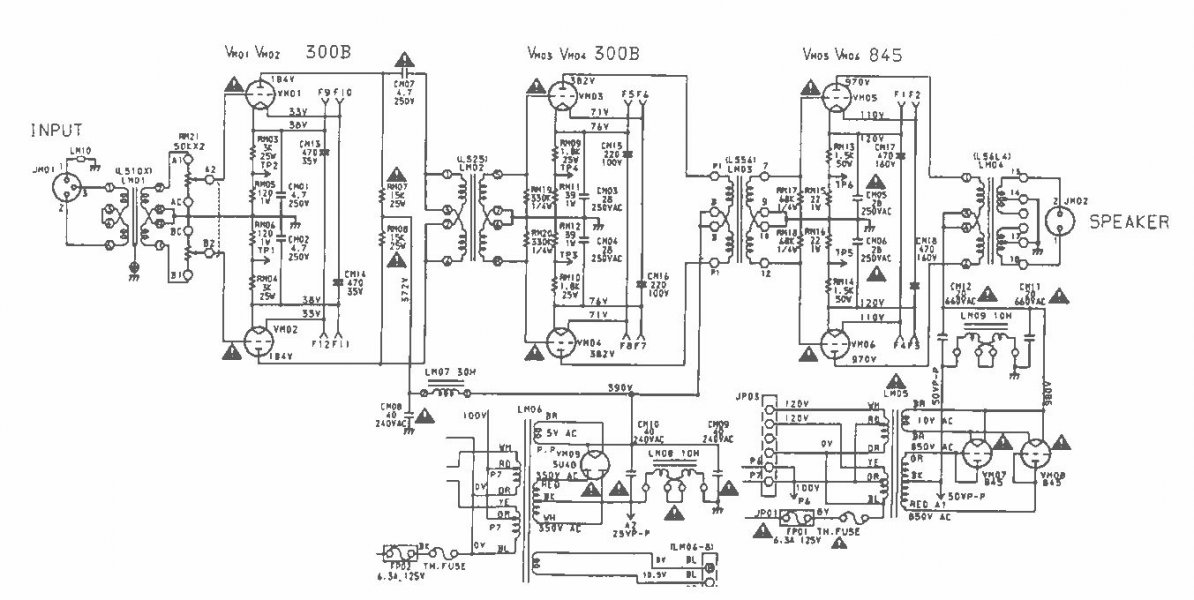I am looking for new 845 tubes. I was considering Premium Linlai. My concern is as follows. I have some tubes in my stash that will redplate. Yet I am told the following about the autobios.
The auto cathode biasing, bias voltage varies up and down automatically to keep the correct bias based on the tube. For example too much bias current and it’s turned down automatically and too little bias current and it’s turned up automatically. So basically if your tube is looking for 65mA that what the auto biasing will give it ,, HT voltage does not change however at 960-980V. In some ways auto biasing is a bit like plug and play and takes away a lot of the setting up issues of fixed bias setups.
IF this is the case, why is it that some tubes redplate and others don't.
These are my shuguang tubes.
My B tube data says
Uf=10v
Ua=1250v
Ug1=200v
Plat currant 72
The B tube will faintly redplate. It is a mild discolor of black plate to faint opaque red.
My C tube data says the same, but the plate current is 84. The C does not glow red at all. The plate stays black. There is a perception its hot. It does run at 580* Fahrenheit
I also have a set of C that have a plate current of 70. I was told these will redplate in my amp. I have not tried them
The Linlai tube data says the tube has a plate current of 64 at 1000 volts. This is well below the 84 that runs fine and also much lower than the 72 that starts to glow red.
I don't understand Auto bios. How a resistor and cap will sense a tube demand. I can see a resistor and cap always supplying a steady set current, and being a circuit as the tube changes keeping it at a set point. So why are my tubes plates glowing red with the lower plate current tubes???
Thanks
Rex
The auto cathode biasing, bias voltage varies up and down automatically to keep the correct bias based on the tube. For example too much bias current and it’s turned down automatically and too little bias current and it’s turned up automatically. So basically if your tube is looking for 65mA that what the auto biasing will give it ,, HT voltage does not change however at 960-980V. In some ways auto biasing is a bit like plug and play and takes away a lot of the setting up issues of fixed bias setups.
IF this is the case, why is it that some tubes redplate and others don't.
These are my shuguang tubes.
My B tube data says
Uf=10v
Ua=1250v
Ug1=200v
Plat currant 72
The B tube will faintly redplate. It is a mild discolor of black plate to faint opaque red.
My C tube data says the same, but the plate current is 84. The C does not glow red at all. The plate stays black. There is a perception its hot. It does run at 580* Fahrenheit
I also have a set of C that have a plate current of 70. I was told these will redplate in my amp. I have not tried them
The Linlai tube data says the tube has a plate current of 64 at 1000 volts. This is well below the 84 that runs fine and also much lower than the 72 that starts to glow red.
I don't understand Auto bios. How a resistor and cap will sense a tube demand. I can see a resistor and cap always supplying a steady set current, and being a circuit as the tube changes keeping it at a set point. So why are my tubes plates glowing red with the lower plate current tubes???
Thanks
Rex







